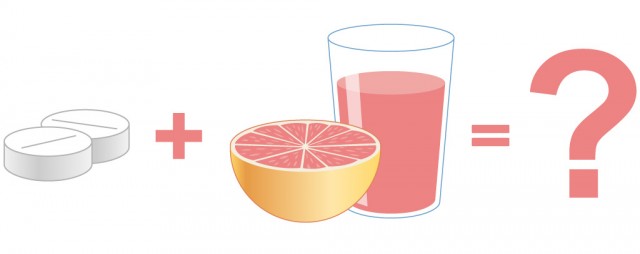Mixing medication and grapefruit juice isn’t something that jumps to mind as being dangerous, but depending on the drug involved, it can be lethal.

Grapefruit contains bergamottin, dihydroxybergamottin, bergapten and bergaptol, chemicals that act as a natural defence mechanism against pests. These chemicals, part of a group of chemicals called furanocoumarins, interfere with an enzyme called CYP3A4 found in the liver and intestine. This enzyme plays a critical role in how the body metabolises xenobiotics, chemicals that are not naturally occurring in the body and which aren’t normally found there.
The action of grapefruit juice on CYP3A4 affects a large variety of drugs, including sedatives, painkillers, immunosuppresants, statins and artificial hormones. The effect of grapefruit juice can be either an overdose or an insufficient dose, depending on the action of the CYP3A4 enzyme on the particular drug.
The discovery that grapefruit juice could interact with drugs was made by mistake when researchers investigating how alcohol interacted with a drug called felodipine used grapefruit juice to mask the taste of the alcohol. Their results did not tie in with other trials involving felodipine and led to their suggestion that this was “possibly due to a pharmacokinetic interaction with the grapefruit juice vehicle”.1 Luckily for those of us that enjoy grapefruit, scientists at the University of Florida are already working on breeding a low-furanocoumarin grapefruit.2
1 D.B. Bailey et al, “Ethanol enhances the hemodynamic effects of felodipine”, Clinical and Investigative Medicine 12(6) (1989): 357-362. PMID: 2612087.
2 Chunxian Chen et al, “Characterization of Furanocoumarin Profile and Inheritance Toward Selection of Low Furanocoumarin Seedless Grapefruit Cultivars”, Journal of the American Society for Horticultural Science 136(5) (2011): 358-363. Link.